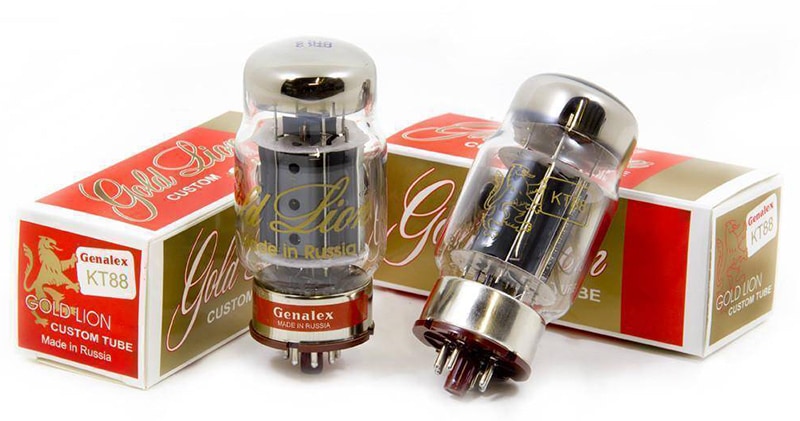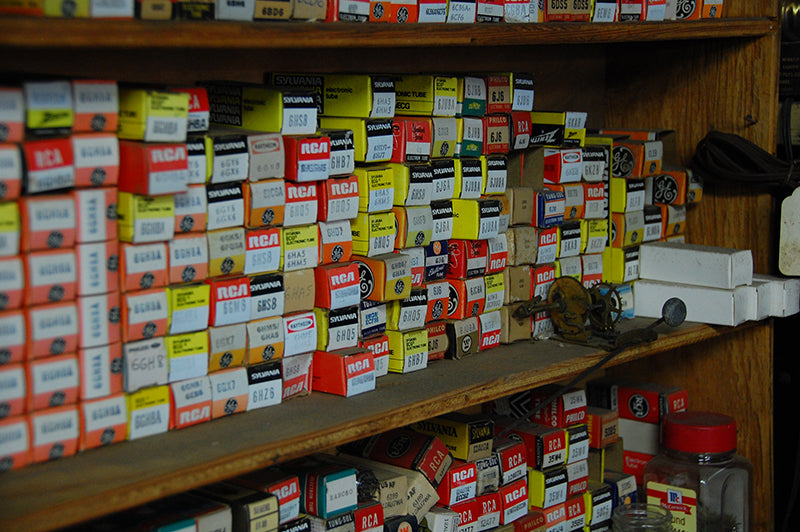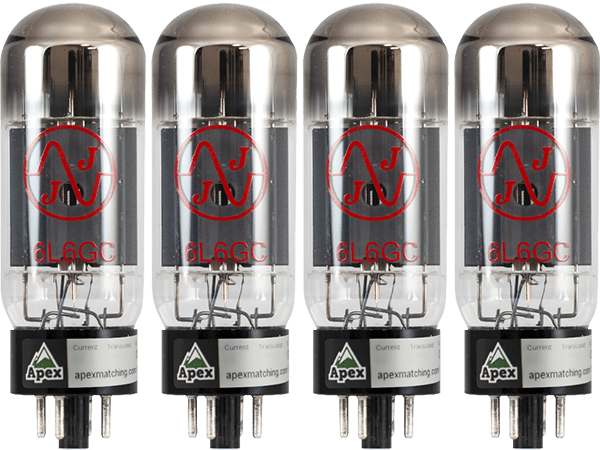Several weeks back, Jay Jay French discussed in his article, “Nero Fiddles while Rome…” (Issue 158), that the atrocities still taking place in Ukraine make our pastime of audio seem frivolous in the shadow of greater existential threats. He is correct, and I’m sure many of us feel the same, especially those with connections to Europe. Ukraine is a horrifying mirror we are forced to stare into every day – reminding us that world peace comes before stereo systems, pursuing justice is more important than pursuing new music, and the safety of humans is more pressing than the consistent flow of consumer goods. When the invasion happened, I went into full boycott mode and was ready to add to my exhaustive list of products, countries, and companies I do not support for various humanitarian reasons.
I don’t drink much vodka unless it’s in a Moscow Mule – ironic, but I like it for the snappy ginger beer and not the usually nondescript vodka mixed in. The volume of Russian vodka imported to the US is minimal compared to the famous European brands such as Ketel One, Grey Goose, and Absolut. Smirnoff and Nikolai sound like they’re Russian but, they are not. Both are distilled in the US by multinational companies. In the early days of the incursion, people poured out Stolichnaya into the gutters as a show of support for the Ukrainian people. They did not know that Stolichnaya, now rebranded as Stoli, is not produced in Russia but in Latvia, a former Soviet republic on the Baltic that declared independence in 1991. (Founder and owner Yuri Shefler left Russia in 2002 and relocated the company headquarters to Luxembourg. After many trademark battles, there remains a Russian version of Stolichnaya distilled in Kaliningrad.)
The Russian Tea Room in New York City, a famous gathering place for artists, was founded in 1927 by ex-pats from the Imperial Russian Ballet. The restaurant added a big banner to their website stating that the restaurant was founded by Soviet defectors after the Revolution and before Stalin. Aside from a few menu options, the most Russian aspect of the Tea Room these days is its décor. Boycotting the Russian Tea Room will only hurt the waiters, cooks, and suppliers. Speaking of ballet, I’ve heard of some people who considered shelving their recordings of Russian composers. If you’re still angry at Romanov Tsars, boycotting Swan Lake by Tchaikovsky (1840 – 1893) is understandable.
But what could I do to make a difference? The only Russian-made products I own are tubes (valves, for our friends in the United Kingdom). After playing solid-state equipment my entire life, I finally got a tube amp last year, and I learned that the installed Mullard EL34 power tubes were made in Russia. My specially selected, thoroughly tested, and carefully matched tubes will last a long time, but I would still need spares in case of failure. Luckily, my amp only requires two power tubes, while the McIntosh MC3500 MkII requires 16 valves to run a pair of monoblocks. Before the war, I purchased a set of Genalex Gold Lion KT88 power tubes from Upscale Audio in La Verne, California, about 50 miles east of Beverly Hills.

New Genalex Gold Lion KT88 power tubes. From the Upscale Audio website.
I recently returned to the Upscale Audio website to see what my non-Russian valve options could be and was greeted by a message from Upscale’s Kevin Deal, advising us to chill out: don’t panic-buy, hoard, or spend any money on extra tubes for the next six months. Adhering to the solid counsel from my go-to tube guy, I only browsed.
Aside from the occasional NOS (New Old Stock) or vintage Western European models, Upscale sells Genalex, Mullard, Electro-Harmonix, and Tung-Sol, all of which are the foundation of so many good vacuum-tube audio components and systems. Sovtek- or Svetlana-branded tubes are obviously Russian, but guess what? So are all the other brands I just mentioned. Although they carry the names of some of the original brands, these are re-issues and not original/NOS tubes. In fact, they’re all made by a single factory in Saratov, located on the banks of the Volga River, 350 miles east of Ukraine and 450 miles southeast of Moscow. The Expo-Pul factory produces nearly every familiar brand that makes it into audio systems and guitar amplifiers – think McIntosh and Fender, just for starters.
How did Russia manage to create a tube monopoly without us even noticing? Well, they didn’t. Besides JJ Electronic in Slovakia, European and American companies had essentially given up commercial tube production decades ago, leaving most of the playing field to China and Russia once tubes fell out of favor and solid-state equipment dominated TVs, audio, and other electronics.
One man, Mike Matthews, and his company New Sensor Corporation (better known as Electro-Harmonix, or EHX) might be responsible for keeping tubes viable over the last few decades, or at least, for fueling the tube habits of audiophiles and musicians. A legend since the 1960s as an early promoter of Jimi Hendrix and Chuck Berry, he is most famous for his guitar effects pedals, notably the Big Muff fuzz pedal. In 1998, Matthews took a daring step and bought the Expo-Pul tube factory in Saratov. You might wonder why he chose Saratov as a location and not Queens, NY, where EHX is headquartered. That’s because it’s easier to go to the tools and the workforce than the other way around.
Tube making is an archaic process compared to 3-D printing, nanotechnology, and computers shrunken into phones. It requires some massive old-world machinery, and skilled factory workers with old-world knowledge to fashion glass, set pins, wind wires for grids, attach the cathodes, anodes, and bases, and then ensure the tubes retain a vacuum. Some of this can be automated, but there’s still plenty of hands-on work required. Furthermore, it takes several different machines to make a single tube model. As tube production waned after the 1960s, tube manufacturing became economically unfeasible for most companies.
While finding machinery and staff for a tube factory is extremely difficult, there is a push to revive localized production. The Great British Valve Project has been gathering vintage machinery to bring the Brimar brand back to Britain. Recently, a junkyard in former Yugoslavia provided a bunch of machines to help make that goal more achievable, but, for now, volunteers are learning to make valves that mostly female workers once cranked out in World War II-era jobs. The Brimars are still made under contract elsewhere, and there’s no telling how much an English valve will cost, but if the modern-day Western Electric company (not to be confused with the original Western Electric, in business from 1869 – 1996, or their products) is any indication, they will not be cheap.
A pair of Western Electric 300B power tubes (their only model at the moment), built in the US in Rossville, Georgia, costs $1,499. KR Audio in the Czech Republic produces nearly a dozen types of handmade power tubes, but still, a pair of their KT88 would cost nearly $400. A pair by Psvane from China is a little less at $250, while a set of Genalex Gold Lions have increased to $200. There are other good-quality Chinese brands; however, their production has been impacted by the closure of the OEM Shuguang factory in 2019. On a positive note, Cobi Boykin, Marketing Communications Director at Western Electric told me, “Western Electric is setting up for production of guitar amp tubes like the 12AX7.” Furthermore, the company is taking a survey of the tubes we want next.
It would be wonderful if Tung-Sol Lamp Works could fire-up the Newark, New Jersey factory built in 1907, as well as Mullard and Genalex reestablishing English production in Manchester and London, and so on, but even if that happened, as noted, their tubes would probably be expensive and the rest of us still need affordable tubes built by a Chinese firm, JJ Electronic, or EHX.

A stash of vintage vacuum tubes. New Old Stock (NOS) tubes can be of extremely high quality. Courtesy of Wikimedia Commons/LW Yang.
For now, Mike Matthews is weathering the situation. Electro-Harmonix and the Expo-Pul factory supply very large numbers of tubes to retailers like Kevin Deal, and to guitar companies, audio manufacturers, and consumers. However, new bans and embargoes could be imposed. Even new boycotts could pop up as more American companies are pressured to sever ties with Russia. According to The New York Times, more than 500 companies have left or suspended activity there, while others have scaled back their activities and investments. Electro-Harmonix might have an advantage over other American companies because it builds a product for export, instead of importing goods to sell within Russia. Nevertheless, there’s always the threat of Russia nationalizing foreign businesses and seizing assets.
There is a moral value to boycotting products, but doing so with tubes will have no effect on Russia. The horrific situation in Europe is extremely complex, ongoing, and unpredictable, impacting everything from daily necessities like energy and food down to availability of audio tubes. Copper will continue to monitor developments and Frank Doris will be getting updates from tube manufacturers while attending this year’s AXPONA. If there is a bright spot in all this, as of April 12, EHX issued a statement saying, “We expect to receive a large shipment of tubes from Russia sometime around April 20.” The statement also went on to note that because of a recently-imposed 35 percent tariff, prices will be higher, both for backorders and new orders.
Unfortunately, as of April 19th, Upscale Audio has frozen tube sales due to hoarding. However, they will support customers who purchased tube equipment from them. When tubes are made available again, expect purchase limits per customer and shortages of some types and brands. We advise checking daily for updates. You can also check Tube Depot, Doug’s Tubes, Viva Tubes, or the TheTubeStore. For vintage and NOS valves, try Brent Jessee Recording and Supply.*
*This list does not imply endorsement or guarantee.
(Special thanks to Kevin Jolly, Marketing Associate at EHX, and Cobi Boykin of Western Electric.)
Header image: a set of matched quad JJ Electronic 6L6GC power tubes. From the Amplified Parts website.



